Now Available: 15 New Exhibition Files from Pat O’Neill
Posted November 20th, 2023 in Announcements, New Acquisitions, New Digital Files, News / Events
Canyon Cinema is excited to announce the acquisition of 15 exhibition files from the West Coast film maestro, Pat O’Neill. This deposit includes recent digital transfers of avant-garde classics such as Water and Power (1989), Trouble in the Image (1996), and 7362 (1967), among others, as well as two video works that are new to the collection: Starting to Go Bad (2009) and Where The Chocolate Mountains (2015).
A founding father of the Los Angeles’ avant-garde film scene, an influential professor at CalArts, and an optical effects pioneer, O’Neill is best known for his short works from the early 1960s onwards which are highly graphic, layered, and reflexive assemblages based on a mastery of optical printing techniques.
In O’Neill’s films boundaries fade, narrative collapses, and layers of imagery draw the viewer simultaneously towards and away from linear meaning. O’Neill has combined found footage with experimental montage and compositing techniques to create a graphic language that deals with how different, often disparate elements assembled together in the frame relate to one another. His innovative optical techniques anticipated our digital landscape well before its time.
A Canyon-on-Demand streaming program featuring four 16mm O’Neill stunners from the 1970s – Foregrounds (1979), Easyout (1972), Sleeping Dogs (Never Lie) (1978), and Down Wind (1973) – will be available for a week starting Monday, November 27, 2023. Stay tuned for details.


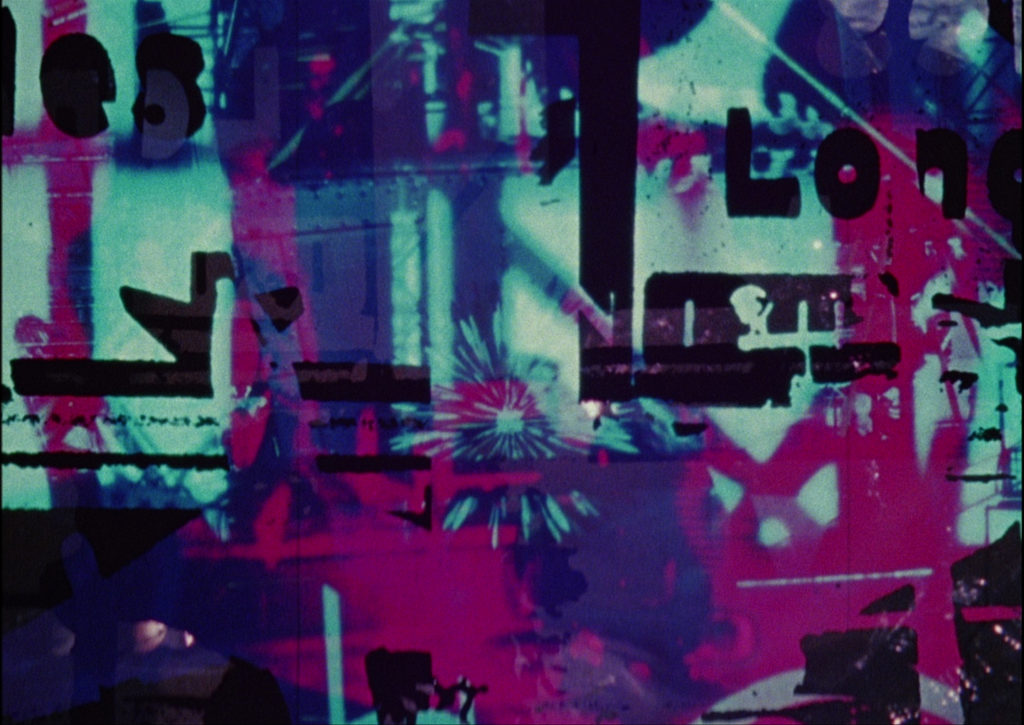
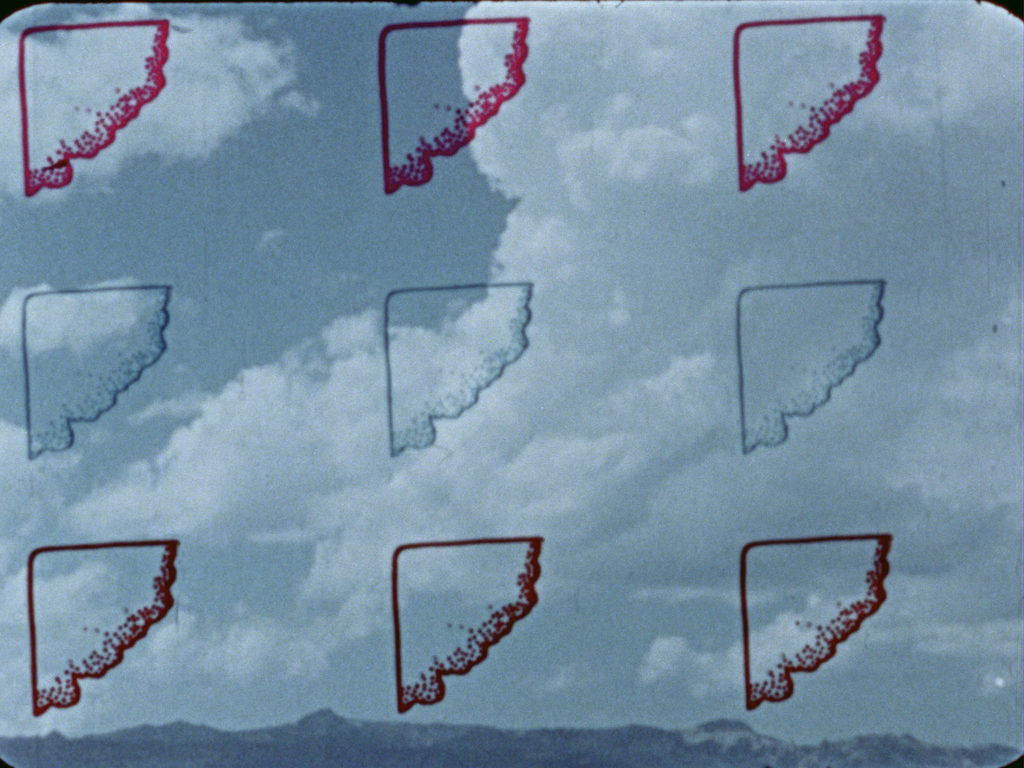
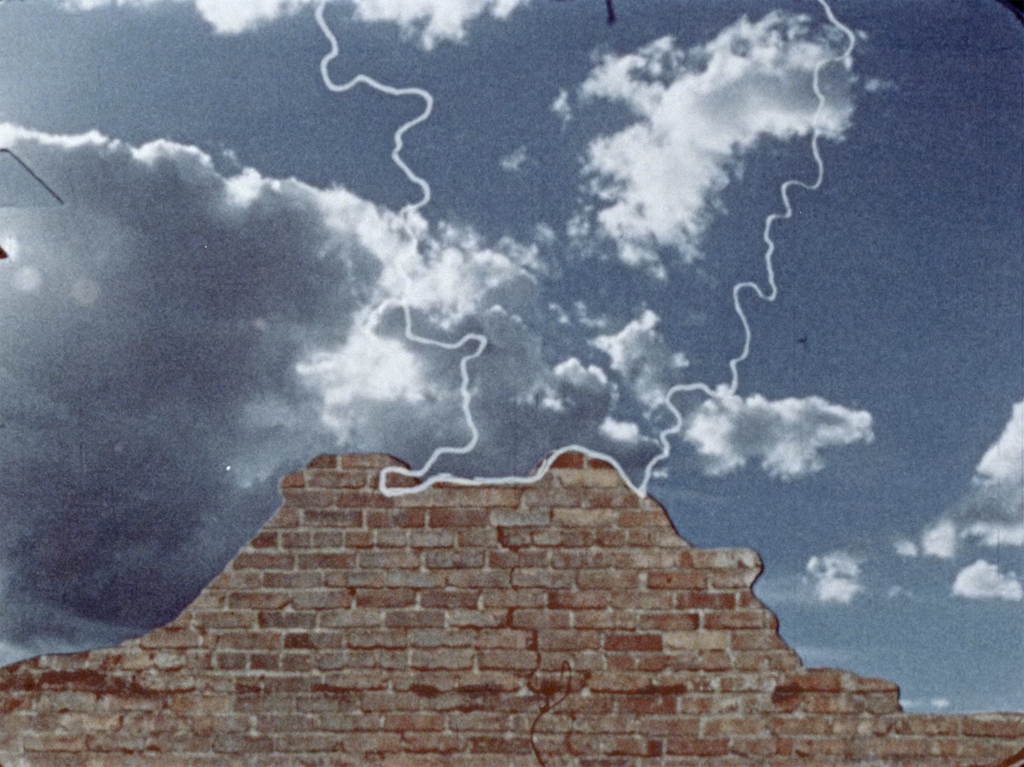

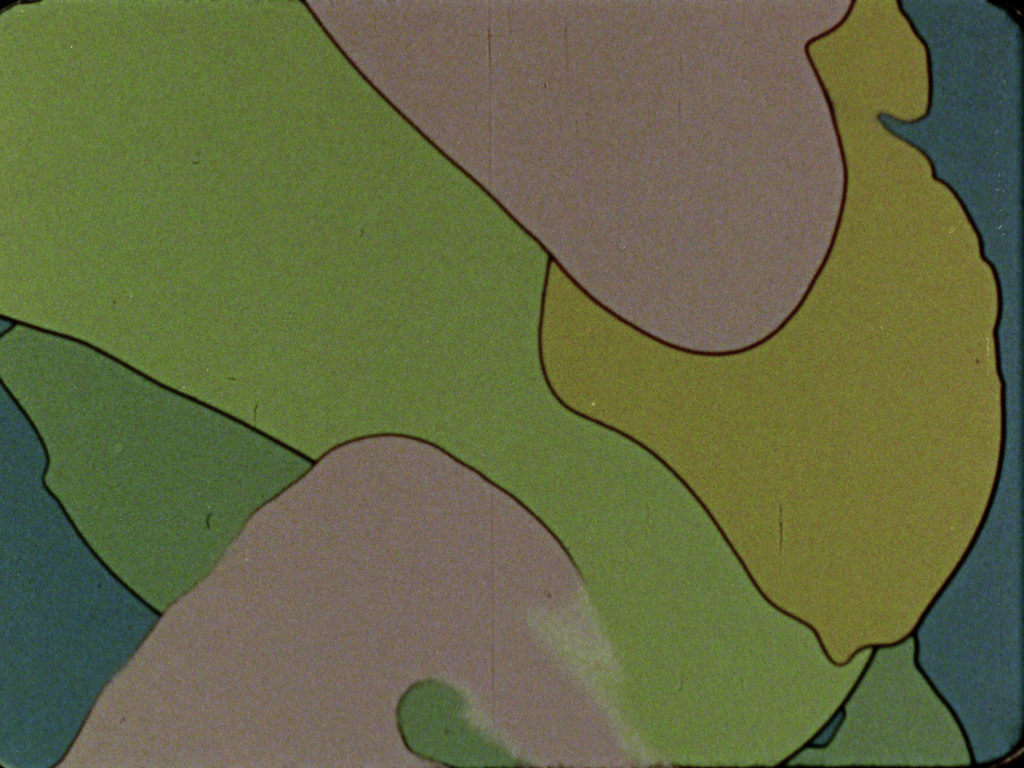
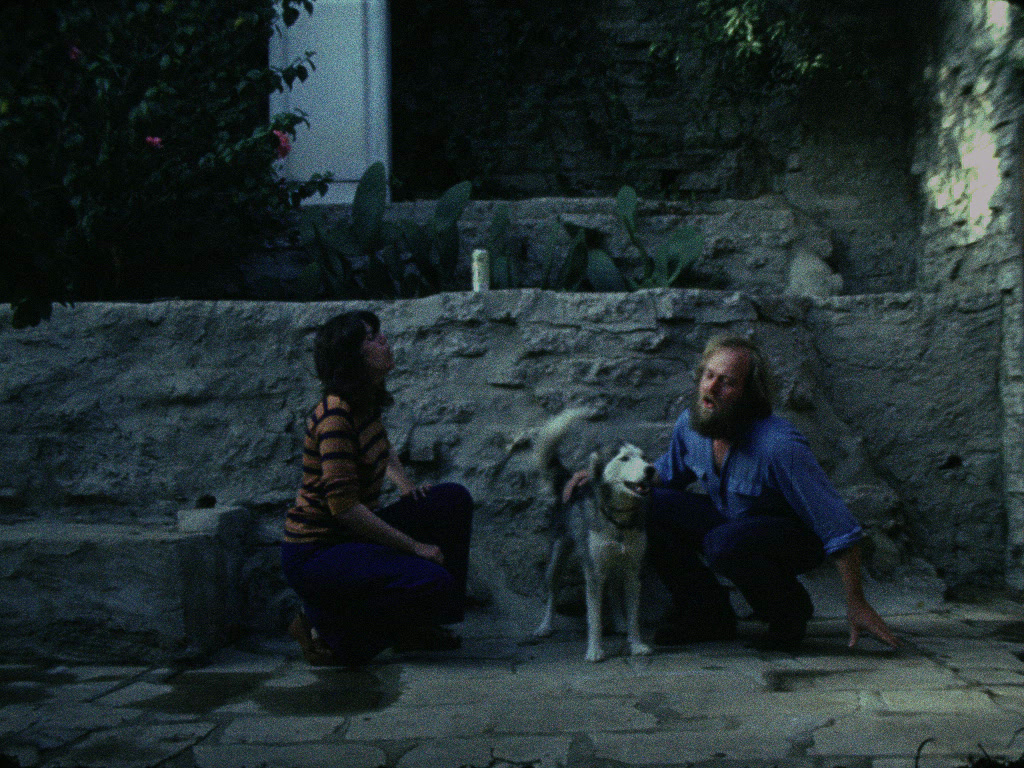

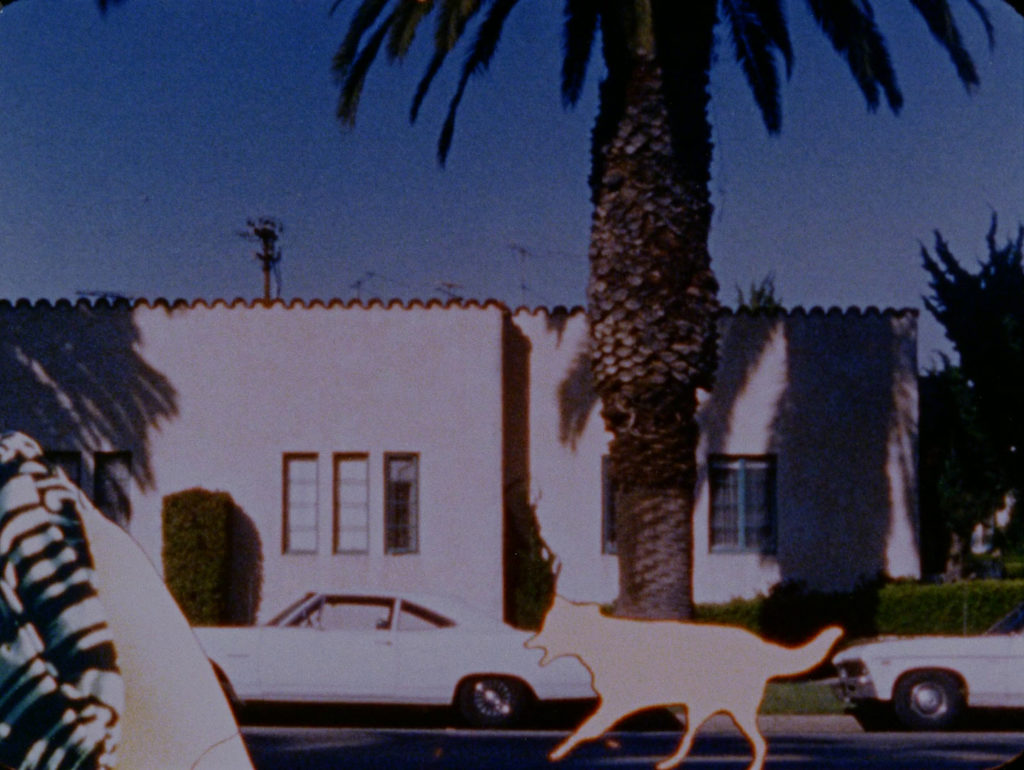
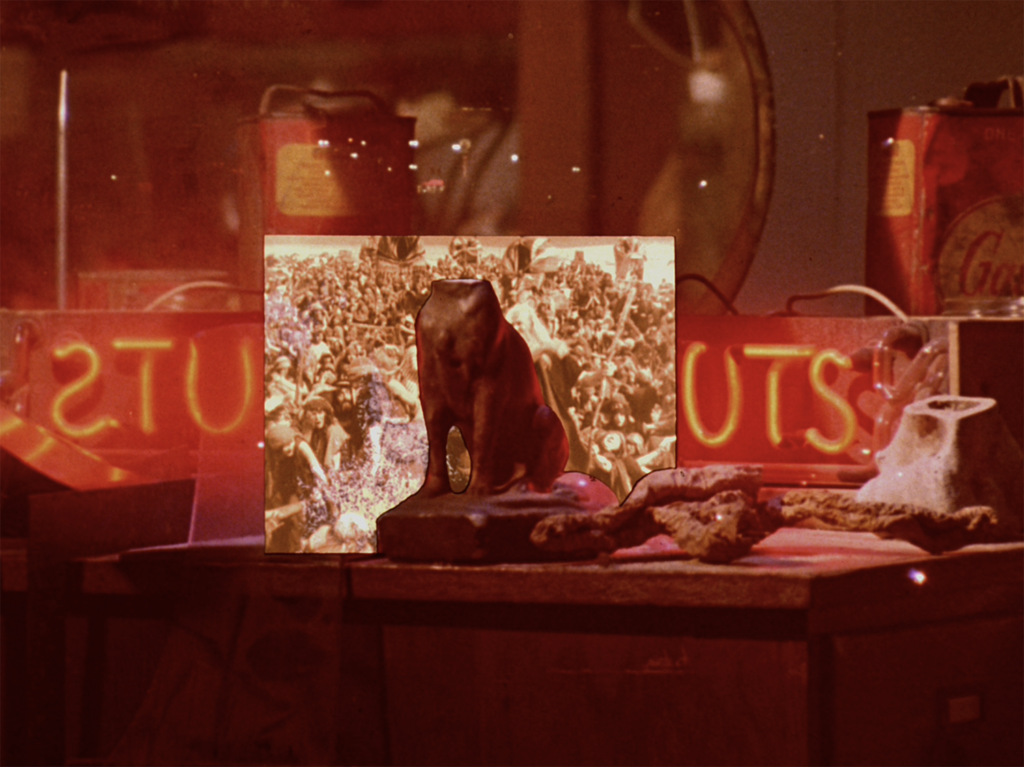
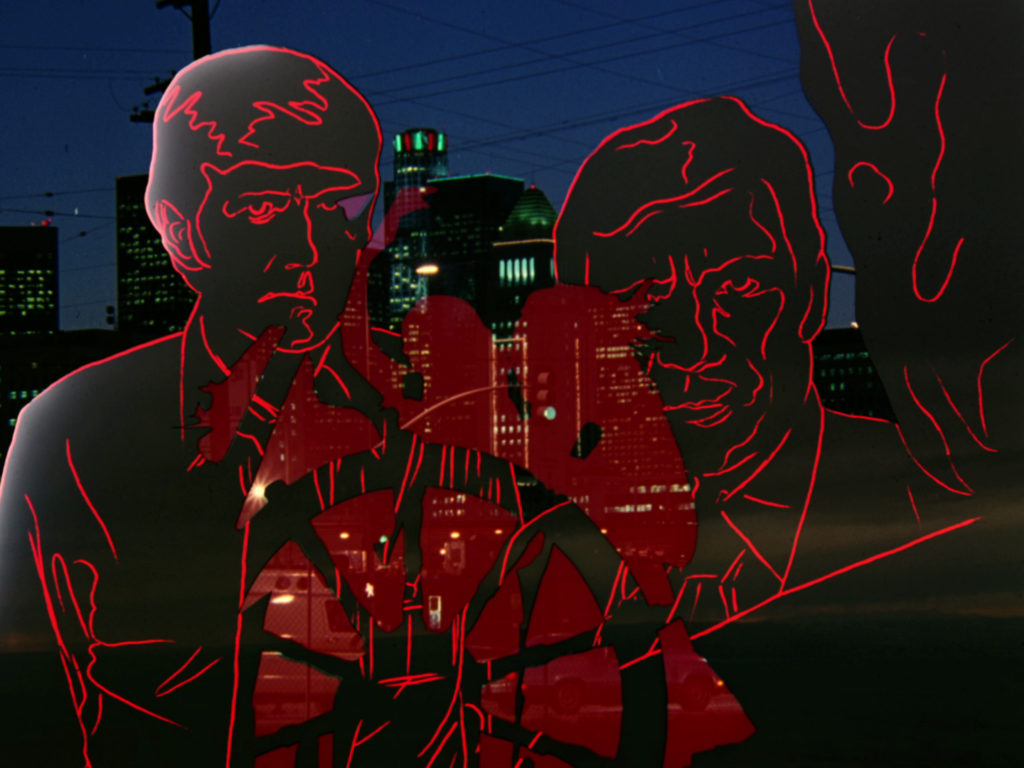

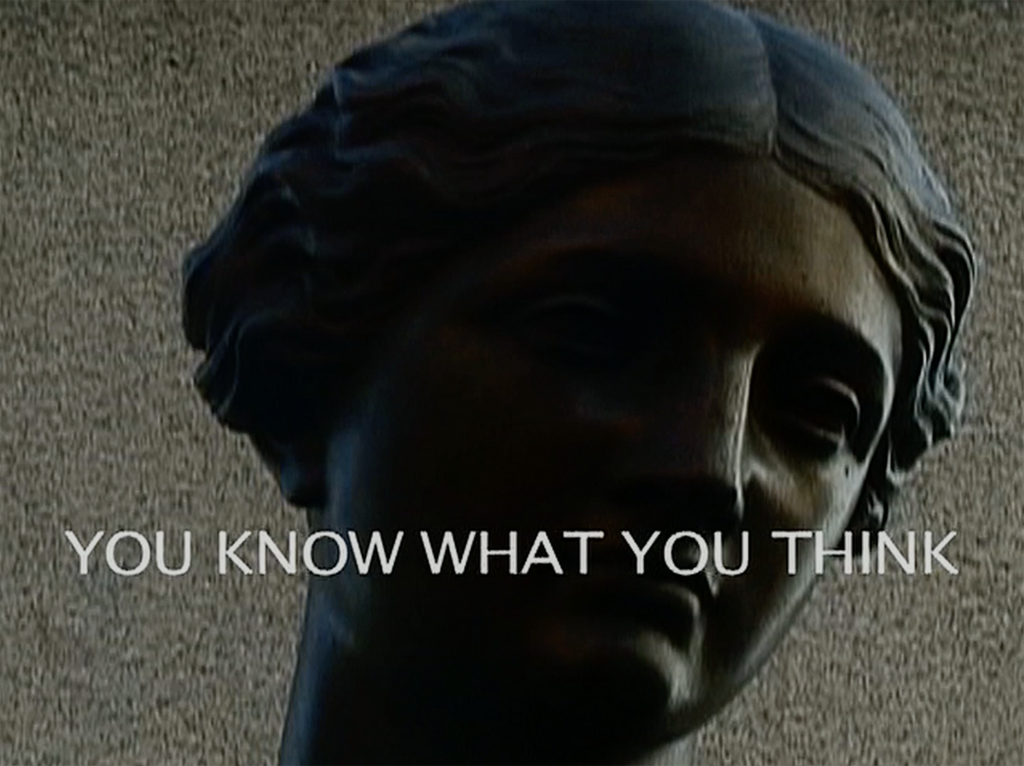

By the Sea (1963, 10 minutes, b&w, sound, 16mm or digital file)
Pat O’Neill’s first film, made in collaboration with Robert Abel. “O’Neill began filmmaking as an extension of photography with a ‘documentary’ By the Sea (1962), co-produced with Bob Abel (who later became famous for his advertising films), for the finale of which O’Neill printed images of beach activities on high-contrast film for a dazzling sun effect, and edited them in crisp dynamic rhythms.” (William Moritz)
7362 (1967, 10 minutes, color, sound, 16mm or digital file)
A bilaterally symmetrical (west to east) fusion of human, biomorphic and mechanical shapes in motion. Has to do with the spontaneous generation of electrical energy. A fairly rare (ten years ago) demonstration of the Sabattier effect in motion. Numbered after the film stock of the same name.
Runs Good (1970, 10 minutes, color, sound, 16mm or digital file)
A darkish journey down memory lane, to visit some news events, folkways and thought patterns associated with the late forties and early fifties. The film is also concerned with such perceptual phenomena as color-space, “false tones” caused by varying black-white alternations of simultaneously seen rhythms set up by multiple repetitive actions, and the use of image outlines as “containers” for other imagery. Sort of a working notebook, which is continued in Easyout and Down Wind.
Easyout (1972, 9 minutes, color, sound, 16mm or digital file)
Has to do with a consideration of one possible conceptual model for human existence: that of a primitive form of yardchair, upon which sits The Creator, impassively observing the inexorable flow of His mountains. The name “Easyout” is derived from a commercially available bolt and stud-extracting tool, whose function seemed strangely parallel to that of the film.
Down Wind (1973, 14.5 minutes, color, sound, 16mm or digital file)
A thoughtful treatment of some of the problems we (mankind) have been having in dealing with our fellow species, animal and vegetable. Actually an undercover “structural” film, this one seems at first to be some sort of berserk travelogue. I spent years going to travelogues as a child, and still have a great fondness for visiting natural history museums in strange cities.
Saugus Series (1974, 18.5 minutes, color, sound, 16mm or digital file)
Actually, seven short films, one-and-a-half to six minutes long, united by a common soundtrack. Each is an evolving “still life,” made up of meticulously assembled but spatially contradictory elements. For example, in one part the sun can be seen, by its shadows, to be traveling in one direction in the upper half of the screen, and in the opposite in the lower half.
Sidewinder’s Delta (1976, 21 minutes, color, sound, 16mm or digital file)
“When a giant trowel is plunged into the floor of Monument Valley, it’s as though John Ford had hired Claes Oldenburg to dress his set. The film, O’Neill’s most ambitious to date, with a dreamy, narrative subtext underlying its sensuous surface, is framed by abstract animations which denote scratches or scraped-off emulsion in much the same way that Roy Lichtenstein offered a benday-dot brushstroke as a painterly gesture.” – J. Hoberman, The Village Voice
Sleeping Dogs (Never Lie) (1978, 9 minutes, color, sound, 16mm or digital file)
The day they filled all that gravel in front of Jack and Jerry’s old studio on Venice Blvd.
A yellow bird fascinated by reflection.
Several views from the San Francisco Marine Museum on a gray day in December.
Three views of Mercer Street, New York after the second big snowstorm of January, ’78.
Several fogs, a strange puddle, and a female Husky induced to howl by humans.
(This film is perhaps best seen after one of the others, like a “chaser.”)
Let’s Make a Sandwich (1978, 18.5 minutes, color, silent, 16mm or digital file)
Originally presented as a continuous-loop installation. The film is a series of broken fields of movement made by the random interactions of some forty or so movie fragments in superimposition. All are permutations of the same original materials. Interspersed among these are fragments of the “original” films seen unaltered. The film is both complex and monotonous, finely detailed and yet resistant to interpretation. A state of relaxation, even boredom, may allow the experience of images which are more imaginary than actual. These are by necessity very short-lived, and seem to be the product of individual pattern-recognition habits.
Foregrounds (1979, 13.5 minutes, color, sound, 16mm or digital file)
“FOREGROUNDS, like SAUGUS SERIES, is devoted almost entirely to carefully constructed spatial ambiguities. The most visceral of these prints a rotating boulder, occupying half of the screen, over a slow lateral pan across the desert (painted by Neon Park). A faint superimposition of leaves on top of the landscape has the effect of pushing its vista farther back in space. Correspondingly, the boulder bulges out of the picture-plane like a Cezanne apple. The effect is so strong that even when O’Neill begins to animate ‘scratches’ over the image, one’s eye refuses to surrender the illusion of volume.” – J. Hoberman, The Village Voice
Water and Power (1989, 54 minutes, color, sound, 16mm or 35mm or digital file)
Its title comes from the Los Angeles water district. Much of the film was shot in the Owens Valley and in an old office building in downtown LA and is metaphorically about the exchange of energy between two places. It is also about water, in all of its states, and about cyclical motion: the planets, the tides, the implied rotation of the camera on its axis, and the repetitive actions of the performers. There are also quotations from older movies and their soundtracks: at times their landscapes become continuous with those of the present. Human habitation in this wilderness is tenuous and risky.
Trouble in the Image (1996, 38 minutes, color, sound, 16mm or digital file)
Trouble in the Image is a collection of visual and auditory ideas, many of which seem to radiate a sense of internal conflict, irony and rage. The film has no continuing characters, but is made up of dozens of performances dislodged from other contexts. These are often relocated into contemporary industrial landscapes, or interrupted by the chopping, shredding, or flattening of special-effects technology turned against itself. All is not lost, however. The reward is to be found in immersion within a space of complex and intricate formal relationships, where subject matter is almost irrelevant. The film was accumulated over a seventeen-year period by a filmmaker who continues to insist that film can be an art form independent of storytelling.
Horizontal Boundaries (2008, 23.5 minutes, color, sound, 35mm or digital file)
The title Horizontal Boundaries refers to frame lines – the boundaries between one image and the next on a roll of motion picture film. These lines, usually hidden by the projector gate, are revealed as subject matter and as a means of dividing the screen into as many as four very wide images, stacked one above the other. They represent many places, and a few people. My intent was to find ways to allow the images to interact in ways not usually possible. The track includes some Irish fiddle solos and intense recycled dialog.
Starting to Go Bad (2009, 30 minutes, color, sound, digital file)
A diaristic journey in which storytelling and pictorial development proceed along separate paths, inviting the viewer to find, or invent, connectivity.
Where the Chocolate Mountains (2015, 56 minutes, color, sound, digital file)
The Chocolate Mountains lie along the border between South Eastern California and Arizona just North of the Mexico border. Much of the range is used for bombing practice by the U.S. military and its clients. It is off limits to everyone else. The mountains do not appear in the film, though their name is spoken, questioningly, by an actor transplanted from another movie.


